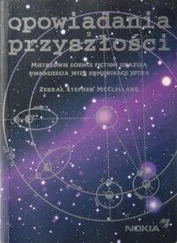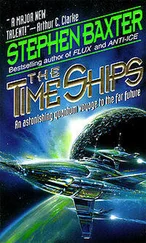Compared to such horror shows our feeble efforts at “ecocide” really don’t amount to much. For example we’ve barely touched the hardy old life forms believed to live in the “deep hot biosphere,” inside the rocks, kilometres down beneath our feet (see Chapter 22). Even if we blasted off the topsoil and irradiated the oceans, those ancient survivors would some day emerge to begin the story of life once more. It is a kind of cold comfort that if we were to disappear tomorrow the wild would take back a recovering world remarkably quickly.
There’s no doubt we face a complex and challenging near future. But, as the example of the ozone layer recovery shows ( Chapter 1), we are capable of facing up to problems on a global scale, and resolving them. I think we’ll survive the green apocalypse, chastened and changed perhaps, and by the time those now young grow old, their children will have found something entirely new to worry about.
But we may need the resources of other worlds to save this one.
PART TWO

RDA
“Killing the indigenous looks bad, but there’s one thing shareholders hate more than bad press—and that’s a bad quarterly statement.”
—Parker Selfridge
The Resources Development Administration (RDA) is a mighty impressive organisation, judging by what we see of it in Avatar .
Consider its competences. It mounts interstellar missions on a huge scale, transporting and building vast industrial and military infrastructures. It mines an alien world. It wages war against the natives. It brings resources back to Earth—and it turns a profit in doing so.
RDA came about because of the discovery of unobtanium on Pandora. After telescopes in the solar system discovered planets of the nearest star Alpha Centauri (see Chapter 13), with Pandora particularly showing tantalising hints of life and strange magnetic effects, two unmanned spacecraft were sent to the system, using prototype versions of the technologies that would one day power Venture Star (see Part Three). From Pandora, landers sent back images of the floating rock masses that would become known as the Hallelujah Mountains, and the landers sampled an “unidentifiable mineral” (later called unobtanium) that seemed to be involved in the exotic physics that was keeping those mountains afloat (see Chapters 15and 16).
The potential for industrial development, and huge profits, was immediately obvious. Corporations and governments quickly formed the Resources Development Administration, an international quasi-governmental consortium, to manage the development of resources from Pandora. RDA was to have complete control over operations on Pandora, but is accountable to shareholders (as administrator Parker Selfridge is all too aware), is limited by treaty in its military operations—no weapons of mass destruction—and is obliged to work on Pandora “for the good of all mankind.”
And then a blue face was seen peering intently into one of the landers’ cameras, and things got complicated…
RDA’s skills wouldn’t have come out of nowhere. Before mankind could launch an interstellar mining operation, governments and corporations would have developed off-Earth operations on a smaller scale, starting with the worlds of our own solar system, feeding a resource-hungry Earth—and all the while making a fat profit in the process. What’s interesting about that is, while we’re not likely to see humans reach the worlds of other stars in our lifetimes, we could well get to see proto-RDAs exploiting the worlds of our solar system.
And maybe that will start with another small step on mankind’s nearest neighbour, the moon. A small step, followed by the chewing of a drill-bit in the lunar dirt.
I once met a man who, like Jake Sully, journeyed through space to another world. He travelled only about a light-second, not four light years. The trip took him three days, not six years. He didn’t need suspended animation, though on the way back, exhausted, he did sleep a lot. But, like Jake, he too walked on a low-gravity world. His name is Charles Duke, and he flew to the moon in 1972 aboard Apollo 16.
I interviewed Duke over lunch in a hotel in Bond Street, London. He told me how the handling of the Apollo lunar lander reminded him of the fighter planes he flew earlier in his career: “It was like being a rough acrobatic pilot. Oh, great ride…” Duke’s low-gravity moonwalks were actually typical of our near-future experience in space. Aside from the four gas giants, Earth is the largest world in the solar system; anywhere humans can land in the sun’s family we’ll find the gravity lower, just as on Pandora.
Then, during his journey home, with the spacecraft suspended between Earth and moon, Charlie Duke assisted in a space walk to retrieve instrument records. “As I floated out, the Earth was off to the right, probably about a two o’clock low, real low. I could see it beyond the hatch, beyond the Service Module. And it was just a little thin sliver of blue and white. And then I spun around this way and directly behind me there was this enormous full moon, and it was, I mean it was overwhelming, that kind of feeling. And you could see Descartes, you could see Tranquillity, all the major features, and it just felt you could reach out and touch ’em. No sensation of motion at all. The sun was up above my eye line but it’s so bright you don’t look at it. And everything else was just black…” He mimed for me his spacecraft, suspended between Earth and moon and sun. What an experience! Even a moonwalk would have some familiar features—ground below your feet, a sky above, a horizon. Duke’s walk between the worlds was something no human being had enjoyed before Apollo, in all our evolutionary experience—which is one reason why, in my opinion, we should continue to send humans into space.
But even as Duke was having his astonishing adventure, President Nixon’s administration was making the decision to can the later moon flights. For the foreseeable future American human spaceflight would be restricted to just the low-orbit hops of the space shuttle. It might have been very different: building on the successes of Apollo, Americans might already have reached Mars. But they didn’t.
Forty years later it’s easy to forget that human beings walked on the moon at all. And it’s easy to forget that the Apollo astronauts didn’t just go there “in peace for all mankind,” as the plaque on Apollo 11’s lunar lander said, or just for the science, or even just for national prestige. Just like RDA on Pandora, they went there in search of resources.
And today, would-be prospectors of the sky are again looking out at the solar system with calculating glints in their eyes.
Before 1969 the exploration and colonisation of the solar system, beginning with the moon and working outwards to Mars and beyond, was pretty much a given. In a favourite novel of my boyhood, Leigh Brackett’s Alpha Centauri—Or Die! (1963), this is nicely summed up in a few lines (Chapter IV): “There are men in space again… [The message] was heard and repeated. Inward from Mars it travelled, across Earth and Venus and into the sun-bitten, frost-wracked valleys of Mercury. Outward from Mars it travelled, to the lunar colonies of Jupiter and Saturn, to the nighted mining camps of the worlds beyond…”
Our view of the solar system then, going back centuries to the pioneering telescopic observations of Galileo, was that it was a family of worlds, most if not all of which would host life. Why shouldn’t there be life? Earth is just another planet; if life is here it ought to be everywhere .
Читать дальше











